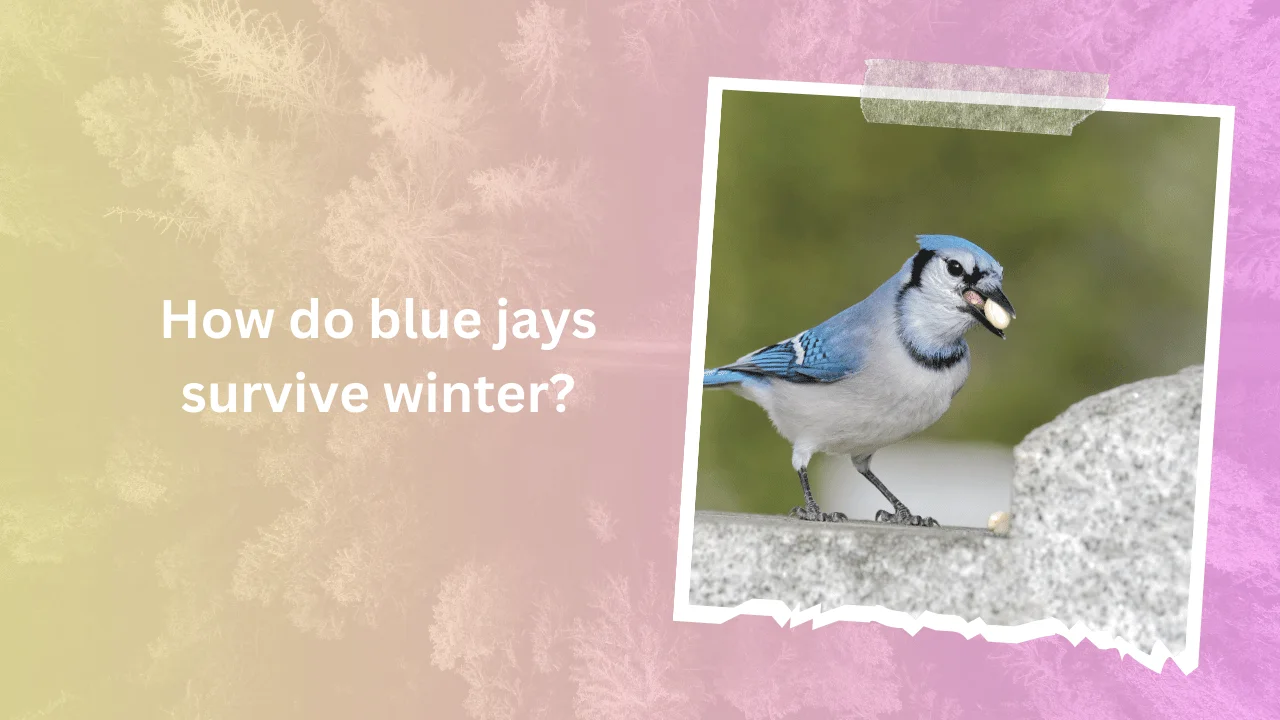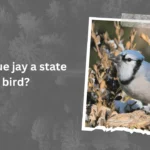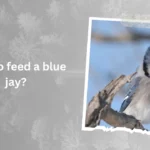The first snowflakes of winter may send shivers down your spine, but for some backyard visitors, it’s a time to showcase their remarkable resilience.
We all know the vibrant flash of a blue jay in spring and summer, but have you ever stopped to wonder how these feathered friends manage to survive the harsh realities of winter?
Imagine this: The temperature plummets, icy winds whip through bare branches, and finding food becomes a daily challenge. Yet, there they are, the blue jays, still strutting their stuff, their bright blue plumage a beacon against the winter white.
So, how do these seemingly delicate birds manage to thrive when so many others struggle? The answer lies in a fascinating array of adaptations and strategies, both physical and behavioral, that allow them to weather the winter storm.
In this blog post, we’ll delve into the secret lives of winter jays, exploring the remarkable ways they overcome the challenges of the season.
We’ll uncover their unique foraging tactics, their surprising social habits, and the hidden tools in their biological arsenal that help them survive the coldest months. So, grab a cup of hot cocoa, settle in, and prepare to be amazed by the winter survival secrets of the blue jay!
Contents
Blue Jay Winter Adaptations
Blue jays have evolved various physical adaptations to help them withstand the harsh conditions of winter.
One of the most noticeable adaptations is their thicker plumage, which provides insulation and helps to retain heat. Additionally, they may experience changes in their metabolism during winter, allowing them to reduce their energy expenditure and conserve heat.
Blue jays also exhibit behavioral adaptations to cope with winter conditions. They may become more vigilant and spend more time scanning their surroundings for potential threats or food sources.
Reduced activity levels can also help them conserve energy during colder periods. Furthermore, blue jays may form roosting groups with other birds, which can provide warmth and protection from the elements.
Food Availability and Foraging Strategies
The availability of food resources can significantly impact the survival of blue jays during winter. As food becomes scarcer, blue jays must adapt their foraging strategies to find sustenance.
They may become more opportunistic, seeking out a wider variety of food sources, such as insects, seeds, and fruits. Additionally, they may spend more time foraging and exploring different areas in search of food.
Food caching is another important strategy that blue jays employ during winter. By storing food in hidden locations, they can ensure a reliable supply of food during times of scarcity. Blue jays are known to cache a variety of items, including acorns, nuts, and insects.
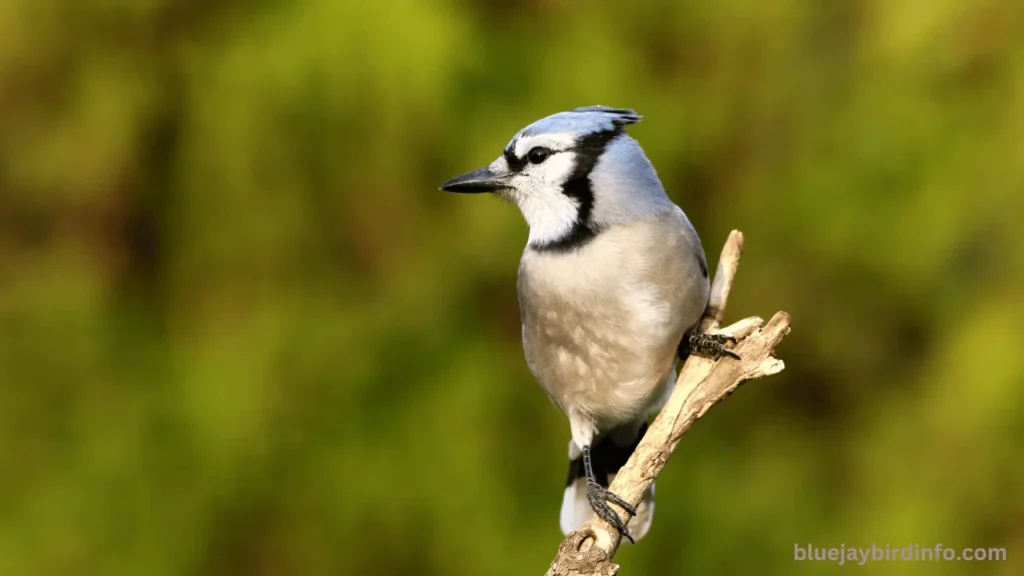
Human-provided food sources, such as bird feeders, can also play a crucial role in supplementing blue jay diets during winter.
By providing a consistent supply of food, these feeders can help to ensure the survival of blue jay populations, especially in areas where natural food sources are limited. However, it’s important to manage bird feeders responsibly to avoid attracting unwanted pests and to prevent the spread of diseases.
Shelter and Protection
During winter months, blue jays may modify their nesting behavior or seek alternative shelter to protect themselves from the cold and inclement weather.
While they typically build their nests in trees during the breeding season, they may utilize existing cavities or other sheltered areas for roosting during winter.
Roosts can provide warmth and protection from predators. Blue jays often form roosting groups with other birds, which can further enhance their chances of survival.
By roosting together, they can share body heat and create a warmer environment. Additionally, roosting in groups can provide protection from predators, as the increased number of eyes can help to detect potential threats.
Energy Conservation
Blue jays are endothermic animals, meaning they generate their own heat. This ability allows them to maintain a relatively constant body temperature, even in cold weather. However, to conserve energy during winter, blue jays may employ various strategies.
Torpor is a state of reduced metabolic activity that allows animals to conserve energy. While it’s not as common in birds as in some mammals, there is evidence that some small bird species, including chickadees and hummingbirds, can enter a state of torpor during extreme cold conditions.
While there is no definitive proof that blue jays can enter torpor, it’s possible that they may do so under certain circumstances.
In addition to torpor, blue jays can also reduce their activity levels during winter to conserve energy. They may spend more time roosting in sheltered areas and limit their foraging activities to periods of warmer weather.
Furthermore, blue jays may have physiological adaptations that allow them to reduce their metabolic rate and conserve energy during cold weather. These adaptations could include changes in their body composition or hormonal responses.
Conservation Implications
Preserving healthy habitats is crucial for the survival of blue jays and other wildlife, particularly during winter months when food and shelter resources may be limited.
Deforestation, urbanization, and other human activities can lead to habitat loss and fragmentation, which can negatively impact blue jay populations. By protecting forests, woodlands, and other natural areas, we can ensure that blue jays have access to the resources they need to thrive.
Bird feeders can play a significant role in supporting blue jays during winter, but it’s important to manage them responsibly. Providing a variety of food options, cleaning feeders regularly, and taking precautions to prevent the spread of diseases are essential for ensuring the well-being of birds.
Public education is also crucial for raising awareness about the needs of blue jays and other winter wildlife. By educating the public about the importance of habitat preservation, responsible bird feeding, and other conservation practices, we can foster a greater appreciation for these fascinating creatures and help to ensure their survival.
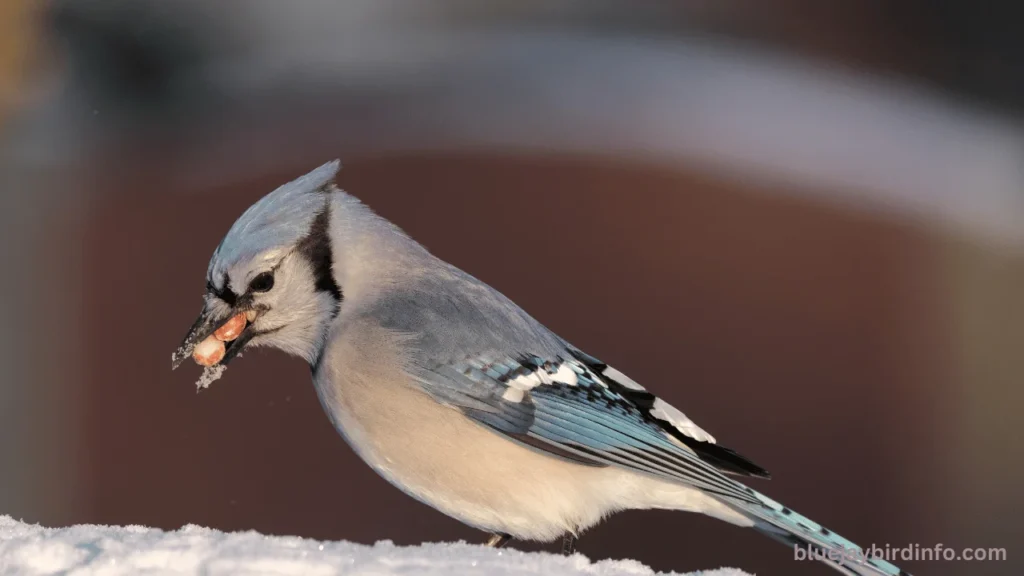
Conclusion
In conclusion, blue jays are remarkably adaptable birds that have developed various strategies to survive the harsh conditions of winter.
They employ a combination of physical adaptations, behavioral changes, and foraging strategies to ensure their survival during this challenging season.
By understanding the unique challenges faced by blue jays during winter and the strategies they employ to overcome them, we can better appreciate their resilience and adaptability.
It’s important to support habitat preservation and responsible bird feeding to ensure the continued survival of these fascinating creatures.
Also, read other articles related to Blue Jay Habits!
FAQ’s
Do blue jays hibernate during winter?
While blue jays do not hibernate in the traditional sense, they may enter a state of torpor to conserve energy during extremely cold conditions.
What do blue jays eat in winter?
Blue jays adapt their diets to the available food resources during winter, which may include acorns, nuts, seeds, and insects.
How do blue jays find shelter during winter?
Blue jays may seek shelter in tree cavities, abandoned nests, or other sheltered areas. They may also form roosting groups with other birds to provide warmth and protection.
Can blue jays survive in extreme cold temperatures?
Yes, blue jays are well-adapted to survive in cold temperatures. They have physical adaptations such as thicker feathers and behavioral adaptations such as reduced activity levels to conserve energy.
How can I help blue jays during winter?
You can help blue jays by providing bird feeders with a variety of food options, ensuring that they have access to clean water, and protecting their habitats.
Yes, blue jays are highly social birds and often form flocks during winter. These flocks can provide warmth, protection, and increased foraging efficiency.

